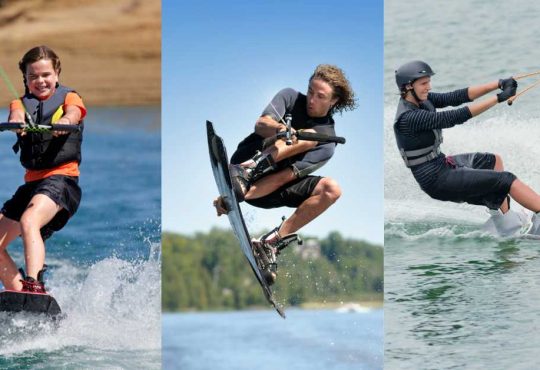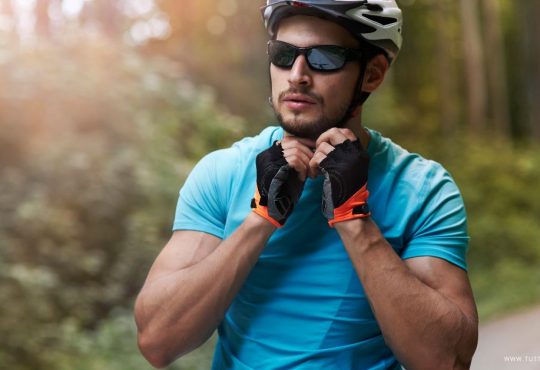As summer approaches, the call of the open water becomes irresistible. Whether you’re a thrill-seeker or just looking for a relaxing day by the water, outdoor water activities offer something for everyone. From splashing around in a lake to riding the waves at the beach, these activities are perfect for cooling off and having a blast. This guide will explore 12 exciting outdoor water activities that promise to make your summer unforgettable. Get ready to dive in!
In this article, we’ll cover a range of activities suited for different preferences and skill levels. You’ll find something for every type of water enthusiast, whether you enjoy serene paddling or high-energy water sports. So, grab your sunscreen and let’s explore these summer fun ideas!
1. Kayaking
Kayaking is a versatile outdoor water activity that caters to both beginners and seasoned adventurers. With options ranging from tranquil lake paddling to challenging river rapids, kayaking provides an excellent way to enjoy nature and get a full-body workout.
Beginner Tips:
- Practice Paddling: Spend time learning proper paddling techniques in calm waters. Focus on your stroke and steering to gain confidence.
- Learn to Exit: Practice safe and efficient ways to exit your kayak, especially if you capsize. Knowing how to right a flipped kayak is essential for safety.
Advanced Tips:
- Master the Roll: Learn the Eskimo roll, a technique for righting your kayak without exiting it. This is particularly useful in whitewater kayaking.
- Study Rapids: Understand different types of rapids and how to navigate them. Use maps and guides to familiarize yourself with the water conditions.
Why It’s Great:
- Variety: Kayaking offers a range of experiences, from serene lake paddling to thrilling whitewater adventures. You can tailor your kayaking experience to match your skill level and interests.
- Fitness: It provides a full-body workout, focusing on your arms, core, and legs. Paddling strengthens muscles and improves cardiovascular health.
- Connection to Nature: Kayaking allows you to explore beautiful waterways and observe wildlife up close, providing a unique perspective on nature.
2. Stand-Up Paddleboarding (SUP)
Stand-up paddleboarding has gained popularity for its mix of fitness and fun. Standing on a large board and using a paddle, you can explore lakes, rivers, and coastal areas.
Essential Gear:
- SUP Board: Choose the board type based on your activity. Beginners often start with a wider board for stability.
- Paddle: A paddle with an adjustable length allows for customization based on your height and paddling style.
- Leash: Attach a leash to your board to prevent it from drifting away if you fall off.
- Safety Gear: Consider wearing a personal flotation device (PFD) and a wetsuit if paddling in colder waters.
Beginner Tips:
- Practice Balance: Start in shallow, calm water to get used to standing on the board and balancing. Kneel or sit on the board if you’re feeling unstable.
- Proper Paddling Technique: Begin with a proper paddle technique, using long, smooth strokes. Keep your core engaged to maintain balance.
Advanced Tips:
- SUP Yoga: Incorporate yoga poses on your board for a full-body workout that improves strength, flexibility, and balance. Start with simple poses and progress to more challenging ones as you gain confidence.
- Wave Riding: For surfing on a SUP, practice paddling into waves and riding them. Learn to read wave patterns and adjust your stance for better control.
Why It’s Great:
- Full-Body Workout: SUP engages multiple muscle groups, including your core, arms, legs, and back. It’s an effective way to build strength and endurance.
- Improves Balance: Balancing on the board enhances core strength and stability, which can benefit other physical activities and daily life.
- Peaceful Experience: SUP allows you to explore tranquil waterways, enjoy scenic views, and connect with nature in a peaceful setting.
3. Snorkeling
Snorkeling opens up a whole new world underwater. With just a mask, snorkel, and fins, you can explore marine life in shallow waters.
Essential Gear:
- Mask: Provides a clear view underwater. Ensure it fits well to prevent leaks.
- Snorkel: A tube that allows you to breathe while keeping your face submerged. Choose one with a splash guard or purge valve to manage water entry.
- Fins: Help you move efficiently through the water. Ensure they fit comfortably and provide adequate propulsion.
Beginner Tips:
- Start in Calm Water: Begin in areas with clear, calm water to get comfortable with breathing through the snorkel and adjusting to underwater visibility.
- Practice Breathing: Before diving in, practice breathing through the snorkel while on land or in shallow water to become accustomed to the sensation.
Advanced Tips:
- Explore Deeper Areas: As you gain confidence, venture to deeper waters and explore coral reefs or underwater formations. Always ensure you have the necessary training and experience for deeper dives.
- Underwater Photography: Capture the beauty of underwater life with an underwater camera. Learn basic techniques for taking clear and vibrant photos.
Why It’s Great:
- Marine Life Observation: Snorkeling provides an opportunity to observe marine creatures such as fish, sea turtles, and rays up close. It’s a thrilling way to experience underwater biodiversity.
- Accessible Adventure: Requires minimal equipment and is suitable for people of various skill levels. It’s a great introduction to underwater exploration without the need for extensive training.
- Educational Experience: Offers insights into marine ecosystems and conservation. Observing marine life in their natural habitat can foster a greater appreciation for ocean conservation.
4. Surfing
Surfing is a dynamic and exhilarating outdoor water activity where you ride on the face of ocean waves using a surfboard. It combines athleticism, skill, and an understanding of ocean dynamics to catch and ride waves. Surfing is not just a sport; it’s a way to connect deeply with the ocean and experience the thrill of riding waves.
Essential Gear:
- Surfboard: Choose a board that matches your skill level and the type of waves you’ll be surfing. Beginners often start with a soft-top board for added safety.
- Wetsuit: Provides insulation and protection from cold water and sun. Essential for surfing in colder climates.
- Leash: Attaches your board to your ankle to prevent it from drifting away if you fall off.
Beginner Tips:
- Start Small: Begin with smaller, less powerful waves to practice balance and paddling techniques. Learn to ride the whitewater and gradually progress to unbroken waves.
- Take a Lesson: Consider taking a lesson from a professional instructor. They can provide valuable tips on technique, safety, and ocean awareness.
Advanced Tips:
- Experiment with Waves: Try different types of waves and conditions to challenge yourself and improve your skills. Practice riding larger and more powerful waves as you gain experience.
- Refine Techniques: Work on advanced techniques such as cutbacks, aerials, and bottom turns. Study videos of skilled surfers to understand and replicate their techniques.
Why It’s Great:
- Adrenaline Rush: Surfing provides an exhilarating sense of accomplishment and excitement. The thrill of catching and riding a wave is unmatched by many other sports.
- Full-Body Workout: It offers a comprehensive workout that engages your core, arms, legs, and cardiovascular system. Paddling, balancing, and maneuvering the board build strength and endurance.
- Connection with the Ocean: Surfing fosters a deep connection with the ocean, its rhythms, and its conditions. It encourages respect for marine environments and promotes an appreciation for nature.
5. Jet Skiing
Jet skiing is an exhilarating outdoor water activity that involves riding a personal watercraft (PWC) at high speeds across the water. Known for its thrilling acceleration and agility, jet skiing offers an action-packed experience for adventure seekers. Whether you’re cruising along the shoreline or navigating through open waters, jet skiing combines speed with the excitement of being on the water.
Essential Gear:
- Life Jacket: A personal flotation device is crucial for safety. Choose one that is comfortable and meets safety regulations.
- Wet Suit or Drysuit: Depending on the water temperature, wearing a wetsuit or drysuit provides thermal protection and safety.
- Helmet: For added safety, especially if performing tricks or riding in rough conditions.
- Gloves: Provides better grip and protects your hands from blisters or injury.
Beginner Tips:
- Learn the Controls: Familiarize yourself with the jet ski’s controls, including the throttle, steering, and braking. Practice in a safe, open area before venturing into more challenging waters.
- Follow Safety Guidelines: Adhere to local safety regulations, such as wearing a life jacket and maintaining a safe distance from other watercraft and obstacles.
Advanced Tips:
- Explore Different Routes: Try different water routes and explore new areas to enhance your riding experience. Be mindful of water conditions and local regulations.
- Try Tricks: Once comfortable, experiment with tricks and maneuvers, such as sharp turns, jumps, and spins. Ensure you have mastered basic control before attempting advanced stunts.
Why It’s Great:
- Speed and Thrill: Jet skiing offers an adrenaline rush with high-speed action and sharp turns. The feeling of zipping across the water is both exhilarating and fun.
- Versatility: Suitable for various types of riders, from beginners looking for a leisurely ride to experienced enthusiasts seeking high-performance thrills.
- Social and Scenic: Jet skiing can be a social activity, perfect for group outings or family fun. It also provides an exciting way to explore beautiful waterways and coastlines.
6. Fishing
Fishing is a beloved outdoor water activity that combines relaxation with the thrill of the catch. Whether you’re fishing from a boat, a dock, or the shore, fishing offers a peaceful escape and the opportunity to connect with nature. It’s a versatile activity that can be enjoyed solo or with friends and family.
Essential Gear:
- Fishing Rod and Reel: Choose based on the type of fishing you plan to do. Rods come in various lengths and power ratings, while reels can be spinning, baitcasting, or spincast.
- Bait and Lures: Live bait (worms, minnows) or artificial lures (spinners, soft plastics) designed to attract the type of fish you’re targeting.
- Fishing Line: Select the appropriate line strength based on the size of the fish and the fishing environment.
- Fishing License: Ensure you have the necessary fishing license for your location, which is often required by local regulations.
Beginner Tips:
- Start Simple: Begin with basic gear and techniques. Familiarize yourself with casting, knot tying, and handling your rod and reel.
- Learn Local Species: Research the fish species in your area and the best times to catch them. Local fishing guides or websites can provide valuable information.
Advanced Tips:
- Experiment with Techniques: Explore different fishing techniques, such as fly fishing or trolling, to enhance your skills and experience.
- Use Technology: Utilize fish finders and GPS to locate fish and navigate different fishing spots. Advanced tools can improve your chances of a successful catch.
Why It’s Great:
- Relaxation and Escape: Fishing provides a tranquil way to unwind and escape the stresses of daily life. It’s a chance to enjoy the outdoors and appreciate the serenity of nature.
- Skill and Patience: Offers an opportunity to develop patience and skill. Learning to read the water, understand fish behavior, and master casting techniques can be rewarding.
- Social and Solitary: Fishing can be a social activity, ideal for bonding with family and friends, or a solitary pursuit, allowing for peaceful reflection and solitude.
7. Swimming
Swimming is a timeless and universally accessible outdoor water activity that offers both recreational and fitness benefits. Suitable for individuals of all ages, it provides a refreshing way to cool off and get a full-body workout. Whether you’re swimming in a pool, lake, or open water, it’s an excellent exercise and relaxation option.
Essential Gear:
- Swimsuit: Choose a comfortable and well-fitting swimsuit suitable for your type of swimming, whether recreational or competitive.
- Goggles: Protect your eyes from chlorine in pools or saltwater in open water, and improve underwater visibility.
- Swim Cap: Helps reduce drag and keeps hair out of your face. Essential for competitive swimming and for those with longer hair.
- Kickboard: Useful for practicing kicking techniques and improving leg strength.
Beginner Tips:
- Start in Shallow Water: Begin by practicing basic movements in shallow water to build confidence. Focus on learning proper breathing techniques and basic strokes.
- Swim in Designated Areas: Always swim in areas with lifeguards or designated swimming zones to ensure safety. Pay attention to any posted rules or warnings.
Advanced Tips:
- Try Different Strokes: Incorporate a variety of strokes into your workout to target different muscle groups and improve overall swimming skills. This also helps prevent monotony and increases fitness.
- Work on Technique: Refine your technique by focusing on stroke mechanics, breathing patterns, and body positioning. Consider working with a coach or taking advanced swimming classes to further improve.
Why It’s Great:
- Full-Body Workout: Swimming engages multiple muscle groups, including the core, arms, legs, and back. It provides a comprehensive cardiovascular and strength workout without putting stress on the joints.
- Low-Impact Exercise: The buoyancy of water reduces impact on joints and muscles, making it suitable for individuals of all fitness levels and those with injuries or arthritis.
- Refreshing and Relaxing: Provides a cooling and relaxing experience, especially in warm weather. The rhythmic nature of swimming can also be meditative and stress-relieving.
8. Canoeing
Canoeing is an enjoyable and accessible outdoor water activity where you paddle a canoe across lakes, rivers, and other waterways. Unlike kayaking, which uses a single-bladed paddle and sits lower in the water, canoeing involves a wider, open boat with a double-bladed paddle. It offers a leisurely pace, making it ideal for exploring natural settings and enjoying a serene experience on the water.
Essential Gear:
- Canoe: Choose a canoe suited to your needs, whether for recreational use, touring, or whitewater. Consider the canoe’s size, stability, and material.
- Paddle: Use a double-bladed paddle, typically made of wood, fiberglass, or carbon fiber. Select the appropriate length based on your height and canoe size.
- Life Jacket: A personal flotation device is essential for safety. Ensure it fits properly and meets safety standards.
- Dry Bags: Keep personal items dry and protected from water. Useful for carrying gear on longer trips.
Beginner Tips:
- Learn Basic Techniques: Start by practicing basic paddling techniques and learning how to steer and maneuver your canoe. Focus on using proper strokes to maintain control and efficiency.
- Paddle with a Partner: If possible, canoe with a partner to share the paddling duties and provide additional stability. Communicate clearly to coordinate movements and ensure a smooth experience.
Advanced Tips:
- Explore Different Waterways: As you gain experience, challenge yourself by exploring different types of waterways, including rivers with varying flow conditions. Adapt your techniques to handle different environments.
- Refine Skills: Work on advanced paddling techniques, such as edging and maneuvering through tight spaces. Practice techniques for handling rough water and improving speed and efficiency.
Why It’s Great:
- Exploration and Relaxation: Canoeing offers a peaceful way to explore natural environments, including lakes, rivers, and wetlands. It provides a chance to connect with nature and enjoy scenic landscapes.
- Exercise and Coordination: Provides a good workout for the upper body, core, and cardiovascular system. Requires coordination and teamwork if paddling with a partner.
- Accessible Adventure: Suitable for people of various skill levels, from beginners to experienced paddlers. It can be adapted for casual outings or more challenging adventures.
9. Wakeboarding
Wakeboarding is an exciting outdoor water sport that blends elements of water skiing, snowboarding, and surfing. Riders are towed behind a boat while standing on a wakeboard, a board similar to a snowboard but designed for water. The boat creates a wake, or wave, which wakeboarders use to perform tricks and stunts. Wakeboarding provides an adrenaline-packed experience and a unique way to showcase skills on the water.
Essential Gear:
- Wakeboard: Choose a board based on your skill level and riding style. Boards vary in size, shape, and flex, affecting performance and maneuverability.
- Bindings: Secure your feet to the wakeboard with bindings that fit comfortably and provide adequate support. Adjustable bindings are often preferred for a customized fit.
- Tow Rope: A strong, durable rope used to connect you to the boat or cable system. Ensure it is the appropriate length for your style of wakeboarding.
- Life Jacket: A personal flotation device is essential for safety. Choose a jacket that fits well and is approved for water sports.
Beginner Tips:
- Start with Basics: Begin by learning basic maneuvers and focusing on balance. Practice getting up from a seated position and riding in a straight line before attempting tricks.
- Work on Balance: Concentrate on maintaining a centered and balanced position on the wakeboard. Keep your knees slightly bent and your weight evenly distributed.
Advanced Tips:
- Practice Tricks: As you gain confidence, start practicing jumps and tricks such as spins, grabs, and flips. Work on controlling your takeoff and landing to execute maneuvers smoothly.
- Experiment with Features: If wakeboarding at a cable park, try using rails, kickers, and other features to enhance your trick repertoire. Always practice tricks in a safe environment and consider wearing protective gear.
Why It’s Great:
- Thrilling Experience: Wakeboarding offers an adrenaline rush and a dynamic way to challenge yourself on the water. Performing tricks and stunts provides a sense of accomplishment and excitement.
- Skill Development: Provides an opportunity to develop skills such as balance, coordination, and aerial maneuvering. As you progress, you can continually set and achieve new goals.
- Social and Fun: Often enjoyed with friends or in group settings, wakeboarding offers a fun and social way to spend time on the water. It’s a great activity for group outings and creating memorable experiences.
10. Scuba Diving
Scuba diving is a fascinating outdoor water activity that enables you to explore underwater environments in greater depth and detail. Using specialized equipment like a wetsuit, tanks, and regulators, scuba divers can venture into deeper waters and observe marine life up close. It offers an immersive experience, revealing a world that is typically hidden from view.
Essential Gear:
- Scuba Tank: Holds compressed air or other breathing gases. Essential for providing the necessary air supply underwater.
- Regulator: The device that delivers air from the tank to the diver. It controls the flow of air and allows for breathing at various depths.
- Wetsuit or Dry Suit: Provides thermal protection and insulation. A wetsuit is suitable for warmer waters, while a dry suit is used in colder conditions.
- Mask and Fins: A mask allows you to see clearly underwater, and fins help with efficient swimming and maneuvering.
- BCD (Buoyancy Control Device): A vest that allows you to control your buoyancy and maintain neutral buoyancy underwater.
Beginner Tips:
- Take a Certification Course: Enroll in a certification course from a recognized agency such as PADI or NAUI. This course will teach you essential skills, safety procedures, and equipment use.
- Practice Equalization: Learn and practice equalizing your ears to prevent discomfort and potential damage as you descend and ascend.
Advanced Tips:
- Explore Different Dive Sites: Divers with experience should seek out diverse dive sites, including different types of marine environments, to broaden their underwater experiences.
- Maintain Equipment: Regularly check and maintain your diving gear to ensure it functions properly. Familiarize yourself with routine maintenance and safety checks.
Why It’s Great:
- Immersive Experience: Scuba diving offers a unique opportunity to explore and interact with the underwater world. It provides a sense of adventure and discovery as you observe marine life and underwater landscapes.
- Connection with Nature: Diving allows you to witness ecosystems that are often inaccessible. It fosters a deeper appreciation for marine environments and the need for their conservation.
- Skill Development: Develops skills related to buoyancy control, navigation, and underwater communication. It also enhances problem-solving abilities and safety awareness.
Conclusion
As summer unfolds, these 12 outdoor water activities provide a variety of ways to make the most of the warm weather. Whether you’re paddling through tranquil waters or catching waves, each activity offers its own set of thrills and benefits. The key is to choose the ones that best fit your interests and skill level, and always prioritize safety and preparation.
Outdoor water activities not only offer enjoyment but also help you stay active and engaged with nature. From the excitement of surfing to the tranquility of fishing, there’s something for everyone. So, dive into these activities and make your summer unforgettable!





